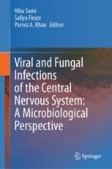Search
Search Results
-
Genetic diversity of macrolides resistant Staphylococcus aureus clinical isolates and the potential synergistic effect of vitamins, C and K3
BackgroundMacrolide antibiotics have been extensively used for the treatment of Staphylococcus aureus infections. However, the emergence of...

-
An Overview of Food-Borne Pathogenic Microbes: Classification, Mode of Actions, and Recent Advances in Strategies for Management of Food-Borne Pathogens
Pathogenic bacteria can result in food-borne illnesses and pose serious risks to both human health and business. The most common pathogenic bacteria,...
-
Correlation between type IIIA CRISPR–Cas system and SCCmec in Staphylococcus epidermidis
A subculture of S.epidermidis strain ATCC35984 that is amenable to genetically manipulate was occasionally found in our laboratory. This mutant...

-
Rare multi-fungal sepsis: a case of triple-impact immunoparalysis
Patients with burn injury and inhalation injury are highly susceptible to infectious complications, including opportunistic pathogens, due to the...

-
Overview of Infective Syndromes of the Central Nervous System and Its Coverings: Decoding Chameleons and Mimics
Infections of the central nervous system (CNS), which include those of the brain’s cerebrum and cerebellum, spinal cord, optic nerves, and the...
-
Study on prevalence and bacterial etiology of mastitis, and effects of subclinical mastitis and stage of lactation on SCC in dairy goats in Egypt
In Egypt, inadequate information on prevalence and epidemiology of caprine mastitis is available. This study was designed to investigate prevalence...
-
Differences in distribution of MLS antibiotics resistance genes in clinical isolates of staphylococci belonging to species: S. epidermidis, S. hominis, S. haemolyticus, S. simulans and S. warneri
BackgroundMacrolides and lincosamides are two leading types of antibiotics commonly used in therapies. The study examines the differences in...
-
In vitro activity of ceftaroline, ceftazidime-avibactam, and comparators against Gram-positive and -negative organisms in China: the 2018 results from the ATLAS program
BackgroundData on antibiotic resistance is essential to adapt treatment strategies against the rapidly changing reality of antimicrobial resistance.
...
-
The Current State of Antimicrobial Use in Bovine Mastitis in Various African Countries
Bovine mastitis is a global threat to the dairy industry, particularly in Africa. This disease is prevalent in 30% of African countries, with the...
-

-
Bilobetin attenuates Staphylococcus aureus virulence by targeting Von Willebrand factor-binding protein and staphylocoagulase
Staphylococcus aureus ( S. aureus ) induces a variety of infectious diseases in humans and animals and is responsible for hospital- and...

-
Investigation on biofilm composition and virulence traits of S. pseudintermedius isolated from infected and colonized dogs
Staphylococcus pseudintermedius , which is part of the skin microbiome of dogs, causes a variety of opportunistic infections. These infections may...

-
Staphylococcal infections and infertility: mechanisms and management
Infertility is a subject of worldwide concern as it affects approximately 15% of couples. Among the prime contributors of infertility, urogenital...

-
Technological Applications of Macrococcus caseolyticus and its Impact on Food Safety
Macrococcus spp. are Gram-positive cocci that belong to the Staphylococcaceae family; they are closely related to staphylococci, but, unlike...

-
PK/PD modeling of daptomycin against MRSA and MRSE and Monte Carlo simulation for bacteremia treatment
ObjectivesThe aim of this study was to investigate the effect of daptomycin against methicillin-resistant staphylococci (MRSA and MRSE) bacteremia...

-
Staphylococci phages display vast genomic diversity and evolutionary relationships
BackgroundBacteriophages are the most abundant and diverse entities in the biosphere, and this diversity is driven by constant predator–prey...

-
Direct detection of methicillin-resistant in Staphylococcus spp. in positive blood culture by isothermal recombinase polymerase amplification combined with lateral flow dipstick assay
Methicillin-resistant staphylococci (MRS) are important antimicrobial-resistant pathogens in sepsis. Conventional blood cultures take 24–72 h. The...

-
Staphylococcal alpha-toxin
Staphylococcal alpha-toxin, archetype of an oligomerizing pore-forming toxin, is produced and secreted as a water-soluble 34 kD monomer. High...
-
Role of Biosurfactants in Biofilm Prevention and Disruption
Biofilm is an integral part of microorganisms in terms of their survival. Various microorganisms tend to produce biofilm of several textures, thus...
-
Freshwater Microbiology: Recent Updates and Prospects
Along with bacteria, other microorganisms are also key components of microbiota structure of freshwater, and those include archaea, microbial...
